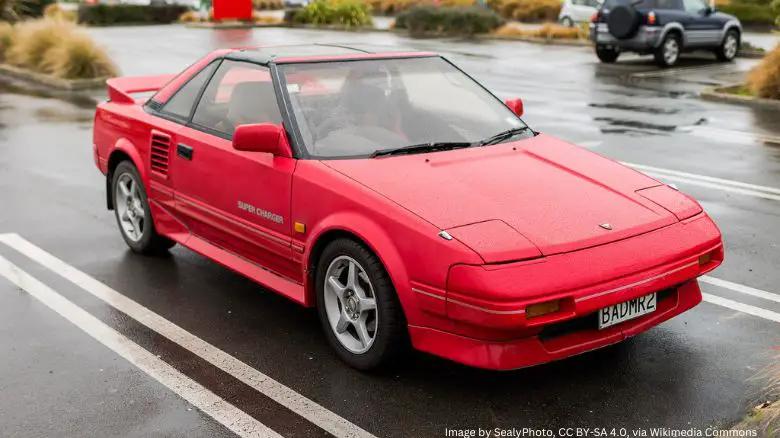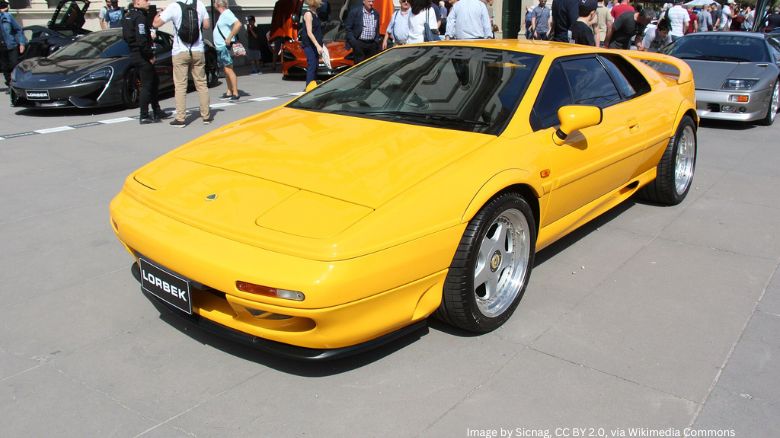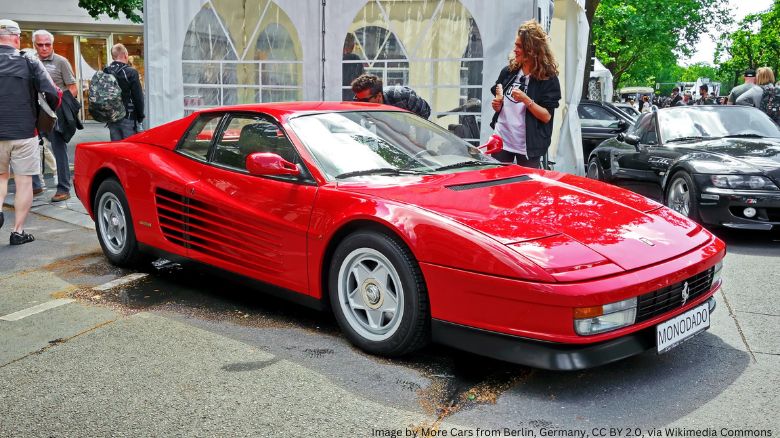5 Boxy Classic Cars Performing Well
Table of Contents
The ‘boxy era’ of the 1970s until the early 1990s produced some absolutely epic cars. But today the nostalgia they provide is fuelling a burgeoning investment frontier for collectors.
The distinctive aesthetics and sharp lines defined a generation of cars, and today we can’t get enough of them.
But which ones are performing particularly well at the moment? I’ve picked five of my favorites that offer a unique blend of pleasure and profit.
Mercedes-Benz W123

The W123 was produced from 1976 to 1985, and epitomizes the blend of luxury, reliability, and timeless design that the Mercedes brand is known for.
Renowned for its build quality and durability, the W123 has sailed through decades not just as a workhorse but as a beloved icon of automotive elegance.
Its boxy design, characterized by clean lines and a classic sedan silhouette, has aged gracefully, embodying a style that is both understated and commanding.
Beyond its visual appeal, the W123 earned a reputation for being virtually indestructible, with many units clocking in hundreds of thousands of miles without falter.
This reputation for reliability, combined with its classic Mercedes-Benz luxury, makes the W123 a desirable piece for collectors and enthusiasts who value both form and function.
The Merc is a very affordable way into the boxy classic market, with an average sale price of $15,697 (£12,255). My latest data also shows a monthly increase of 4.4%; a promising sign of recent interest.
This growth can be attributed to its iconic status, increasing rarity, and the growing trend of investing in vehicles that offer an authentic classic car experience without the exorbitant maintenance costs associated with older or more exotic models.
It attracts a wide range of buyers – from seasoned collectors to first-time classic car investors looking for a reliable entry into the market.
De Tomaso Pantera

The Pantera, a striking emblem of Italian engineering with American muscle, encapsulates the bold spirit of the 1970s sports car era.
Born from the ambitious vision of Argentine-Italian car manufacturer Alejandro de Tomaso, the Pantera (Italian for “Panther”) roared into the automotive scene in the early ‘70s, boasting a mid-engine design that was somewhat of a rarity at the time.
Its low-profile styling, courtesy of American designer Tom Tjaarda, and the raw power of a Ford V8 engine, made it an instant icon, blending European sophistication with American reliability and performance.
The Pantera’s cult status stems not just from its performance and design but also from its exclusivity and the dramatic stories that surround its development and lifespan.
Despite production challenges and a relatively limited production run, the Pantera has cemented its place in automotive history.
In the current classic car market, the De Tomaso Pantera commands an average sale price of $114,715 (£89,563), with a notable monthly increase of 1.3%.
Several factors contribute to the Pantera’s investment appeal:
- Rarity and Exclusivity: With a limited number produced, owning a Pantera places one in a select group of collectors, enhancing its desirability and, consequently, its value.
- Iconic Design and Performance: Its unique blend of Italian design flair and American muscle makes it a standout piece, appealing to a wide range of collectors.
- Cult Status: The lore and allure surrounding the Pantera, from its celebrity ownership to its racing pedigree, add layers of intrigue and desirability.
- Market Trends: The growing appreciation for 1970s sports cars as collectible classics bolsters the Pantera’s position as a solid investment.
As interest in unique and historically significant vehicles continues to rise, the De Tomaso Pantera stands out as a compelling choice for collectors looking to combine passion with investment potential.
Toyota MR2 (Mk1)

The Toyota MR2, a beacon of innovation and performance in the world of sports cars, made its groundbreaking debut in the early 1980s.
As the first mass-produced mid-engine sports car from Japan, the MR2 (Mid-engine, Rear-wheel-drive, 2-seater) was a revolutionary step forward, combining affordability with a thrilling driving experience.
Its angular lines and agile handling captured the essence of the boxy era while providing a level of performance that appealed to enthusiasts and casual drivers alike.
In the current classic car market, the first-generation MR2 has shown impressive performance, boasting an average sale price of $15,071 ($11,766) and despite a dip over the last 12 months, it’s back on track with a monthly increase of 12.4%.
Its recent growth outpaces many of its contemporaries, highlighting the MR2’s burgeoning appeal among collectors and investors.
The car’s affordability, combined with its rising value, makes it an attractive entry point for those looking to dip their toes into the boxy classic car investment pool.
The MR2’s reputation for reliability and the growing classic Japanese car market bolsters its status as a hot commodity.
As more enthusiasts recognize the blend of performance, design, and investment potential the MR2 offers, its trajectory in the classic car market is likely to continue its ascent.
Lotus Esprit (X180)

The Lotus Esprit X180, introduced in the late 1980s, marked a pivotal moment in sports car history. It was the first sign of a traditionally boxy car transitioning towards the aerodynamic era of the 1990s.
This iteration of the Esprit, with its refreshed, Peter Stevens designed bodywork, brought a more rounded update to the classic wedge shape, making it an instant icon of its time.
The X180 offered improved aerodynamics, a more luxurious interior, and enhanced performance.
Its role in popular culture, notably in film and television, cemented its status as a symbol of sophistication and speed.
In the current classic car market, the Lotus Esprit X180 showcases a promising financial outlook with an average sale price of $30,720 (£23,984) and a monthly increase of 1.5%.
Its steady growth underscores the model’s escalating appeal among collectors and investors, who are drawn to its unique position in sports car lore and its comparative rarity in the classic car market.
Several factors contribute to the increasing investor interest in the Esprit X180. Firstly, its distinctive design and performance capabilities set it apart from other sports cars of its era, offering a driving experience that is both exhilarating and refined.
Secondly, the Lotus brand’s reputation for focusing on driver engagement make the Esprit X180 a sought-after piece for enthusiasts seeking purity and precision.
With values on the rise, the Lotus Esprit X180 is becoming an attractive proposition for investors looking to combine their passion for classic sports cars with the opportunity for financial gain.
Ferrari Testarossa

No list of boxy classics would be complete without the Ferrari Testarossa… the king of boxiness (although the Lamborghini Countach may have a valid argument against that).
It’s a legend that embodies the zenith of 1980s supercar design and performance. With its dramatic side strakes and wide stance, the Testarossa captivated the automotive world upon its debut.
It played a pivotal role in defining the era’s aesthetic and engineering ambitions, showcasing Ferrari’s commitment to pushing the limits of what a road car could achieve.
In today’s market, the Ferrari Testarossa presents a compelling investment opportunity, with an average sale price of $154,354 (£120,511), but only a minor increase of 0.3% in last month’s data.
However, if we look at its average price in April last year ($146,838 (£114,643)), we can see it has made decent progress over the last 12 months.
While the percentage increase might seem modest, compared to other vehicles in the ‘80s classic supercar sector, the Testarossa is holding its own. The Countach, for example, dropped 4.7% in last month’s data.
The long-term investment potential of the Testarossa is underpinned by several key factors. Its iconic status and significant role in automotive history ensure that it remains a sought-after model among collectors, while limited production numbers add to its rarity and desirability.
Its association with luxury, performance, and cultural significance makes it a standout piece in any collection, likely to attract attention and retain value over time.
For investors, the Testarossa represents a tangible asset that embodies the passion and prestige of the prancing horse.
The Enduring Appeal of Boxy Era Classics
These five vehicles, from the steadfast Mercedes-Benz W123 to the iconic Ferrari Testarossa, encapsulate a period of bold designs and enduring appeal.
They not only evoke a sense of nostalgia and passion but also present tangible opportunities for financial growth.
The ascent in their market values reflects a growing recognition of their worth, not just as collectibles but as wise investments in a diversifying market.
Investing in classic cars goes beyond the mere acquisition of assets; it’s about owning a piece of history, a work of art that you can drive.
The emotional rewards – pride of ownership, the joy of driving, and the camaraderie found within the classic car community – are invaluable.
The road ahead for boxy era classics is paved with promise. Their blend of distinctive design, historical significance, and investment potential makes them compelling additions to any collection.
ABOUT THE AUTHOR
Adam Chinn writes about the intersecting worlds of classic cars, driving pleasure, and smart investment strategies. Starting his journey at 26, he’s proven that one doesn’t need to be wealthy to begin investing in classic cars.
Adam’s insights have been recognized on platforms such as MoneyInc, Swagger Magazine, and Top Speed.



